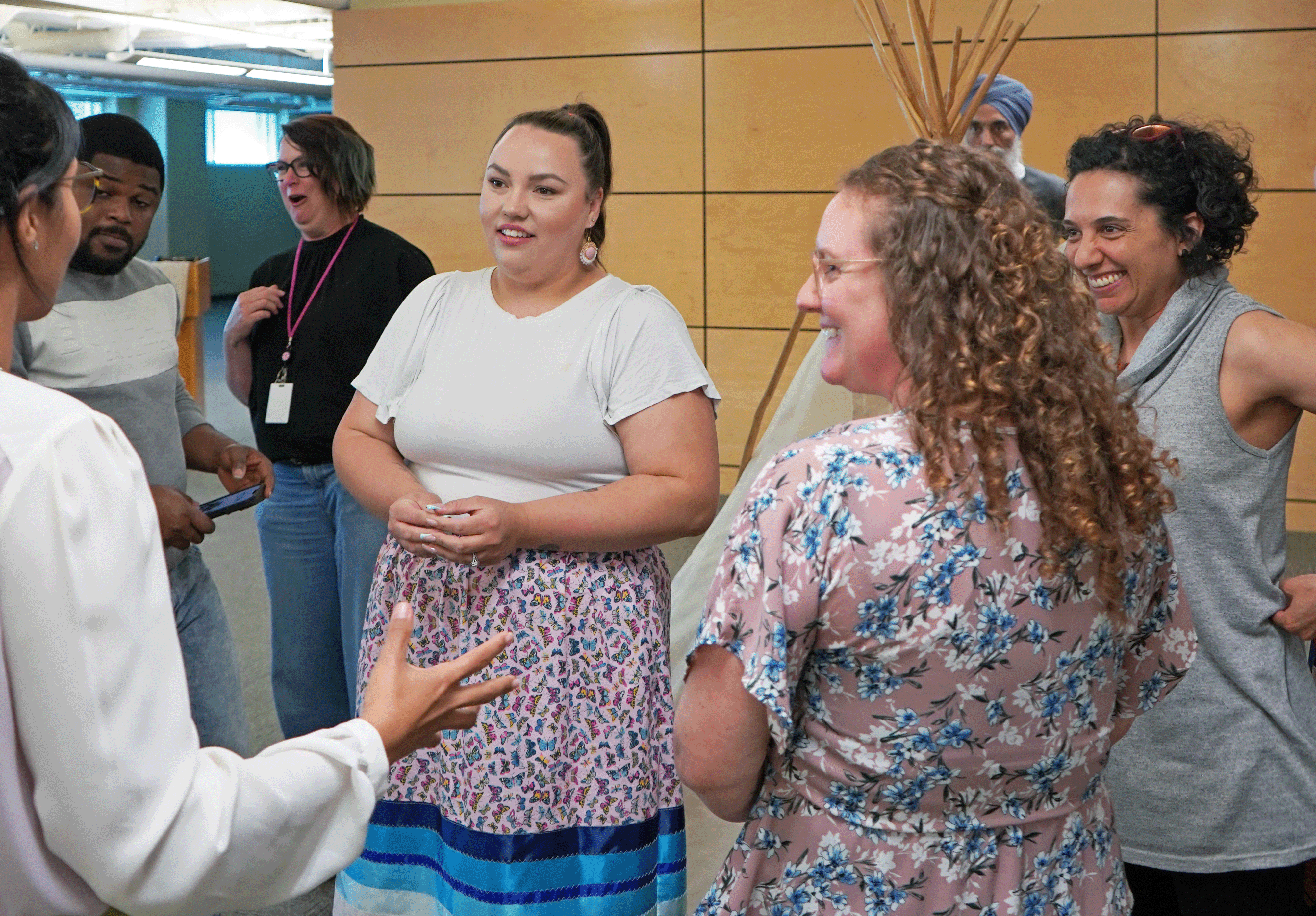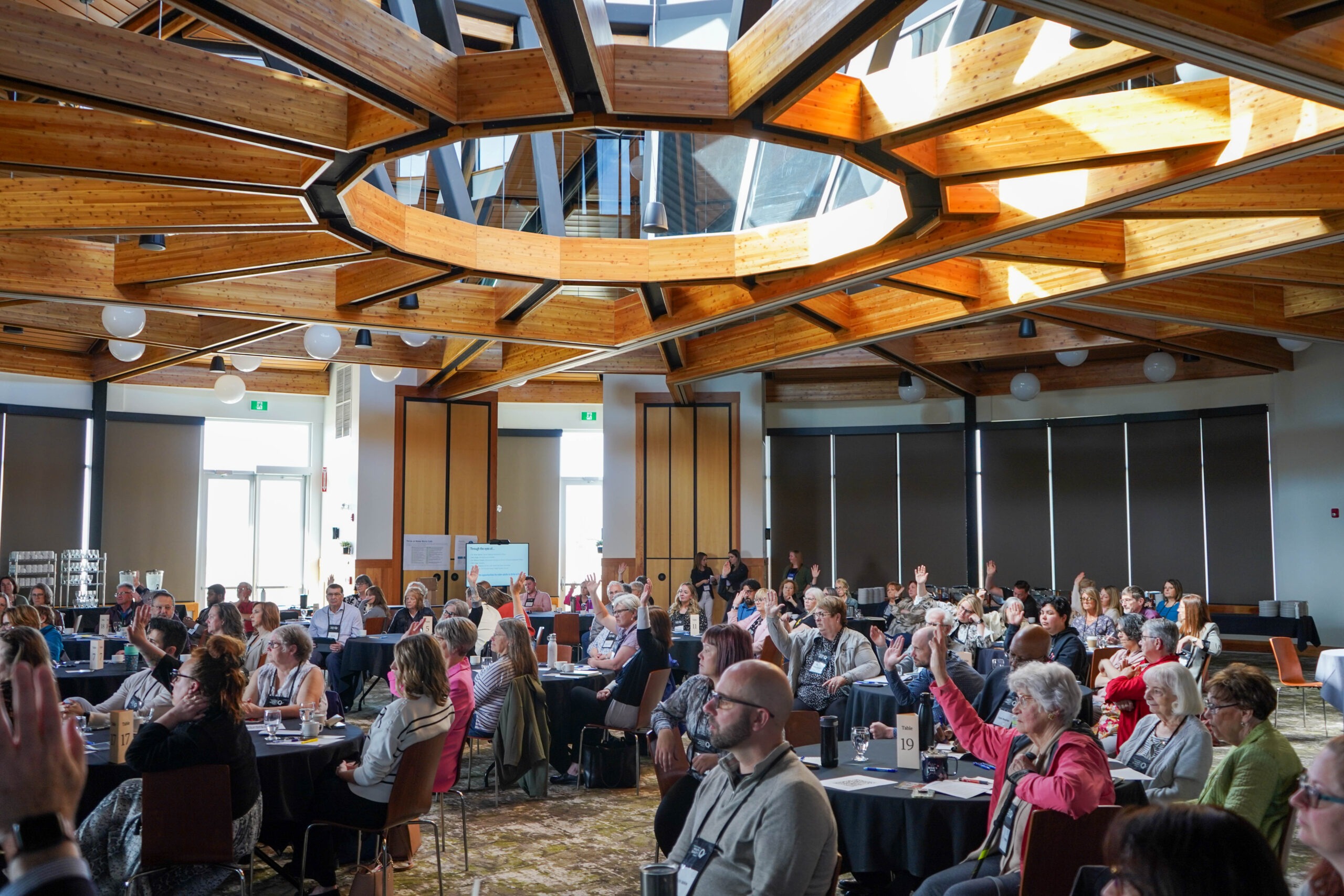With the onset of the global COVID-19 pandemic, many workplaces had to drastically shift the way they operated by transitioning their employees to remote work. For those unaccustomed to working remotely, this shift presents many challenges, but it also offers many opportunities.
Here at HQC, we also experienced the shift to remote work. To provide support to those who found themselves in similar situations, our QI Power Hour team put together some webinar sessions full of remote work tips and tools to help you capitalize on the pros of working remotely and to help you manage the cons. We have combined the sessions and tools together to form a comprehensive toolkit for remote work that we hope will help you in the days, weeks, and months to come.
While the following post lists each tip and tool in the toolkit and highlights a key learning from each session, each session in the toolkit is chock full of tips and tricks to help you make the most out of working remotely!
Table of contents:
- The basics
- Building trust in a virtual environment
- Hosting online meetings
- Remote learning
- Micro-learning campaigns
- Self-care
1. The basics
When it comes to working remotely, there are a few factors that contribute to productivity and success.
Communication
It is essential to establish a means of virtual communication – whether it be through a chat app or video call – and decide how and when team communication will happen. Consider how those unable to attend your meeting can access the information and ensure there is a way for them to catch up.
A Team Charter is a useful tool to help align your team’s expectations and improve productivity.
Physical space
When you have a separate physical space for work, it is easier to create a work-life balance. This can also help you create a mental association between space and activity. If you don’t have a dedicated office space at home, strategies such as using headphones to block out noise distractions or having a pop-up office that you can store in a bin or drawer when your work day is done are good alternative strategies.
Small changes can make a big difference in optimizing your space: solidify your internet connection with ethernet cables, purchase a headset for better sound clarity, make your space as ergonomic as possible, and accommodate your physical and mental wellness by moving around, taking breaks, and generally being aware of what you need to feel healthy and well.

Virtual space
Once you have your physical space laid out, optimize your virtual space!
Consider using free tools such as videoconferencing platforms (Zoom, Webex, FaceTime, Skype, Microsoft Teams, etc.), cloud storage solutions (Microsoft Teams, Google Drive, etc.), and project management tools (Microsoft Planner, Trello, Mural, Miro, etc.) to replicate in person-meetings, the local office computer drives, and your office whiteboards.
*Note: be sure to consider the privacy and security options your organization requires when choosing your platform.
2. Building trust with teams in a virtual environment
Remote work removes many of the familiarities of in-person work which can make it harder to build an environment of trust and understanding within teams.

Without some additional effort and tools in place to adapt to a virtual environment, it can be difficult for team members to have their needs met. In this session we discuss Brené Brown’s anatomy of trust – BRAVING – which breaks down some behaviours that affect trust building.
- Boundaries: You are respectful of others’ boundaries and know your own
- Reliability: You do what you say you are going to do
- Accountability: Own your mistakes and make things right
- Vault: Confidentiality – You do not share information that is not yours to share
- Integrity: You choose to do what is right
- Non-Judgement: You can talk about what you feel without fear of judgement
- Generosity: You separate actions from character and are generous in your interpretation of people’s actions
These tools (which we go over in more detail in the session) can help you manage expectations with your team to build trust:
- How to work with me worksheet – this tool is a neat little “operating manual” for you and your colleagues to use as a quick way to learn how to work with each other
- The SCARF assessment – a free online series of questions to help you learn your social tendencies and how you can better communicate your needs to others
- Team Charter – this worksheet helps teams clarify their goals, roles, processes, and values and provides clarity
3. Hosting online meetings
Not being able to meet in person presents some challenges, including reduction in non-verbal information, more difficult relationship-building, limited one-on-one communication, participation management, and technological issues. However, meeting virtually has some advantages as well, including convenience, co-creation, multiple ways to contribute, and opportunities for relationship building.
In this session, we cover the following methods to streamline meetings:
Clarity of purpose
When you are planning a meeting, consider the three “O’s”:
- Objectives (how coming together will result in change and/or meaningful progress for the team)
- Outputs (what attendees will collectively produce or co-create)
- Outcomes (what changes will attendees experience?)

Building a realistic agenda will ensure you have the time you need to reach these objectives, outputs, and outcomes.
It is also important to determine whether a meeting is needed at all. Can you accomplish the meeting goals without having an actual meeting?
A session blueprint can provide a solid meeting roadmap that can help you determine your purpose and organize the flow of your meeting.

Facilitation basics
Be clear about your expectations for the group and which decisions can happen in-meeting versus which decisions need to happen outside the meeting. Provide space for every voice so all perspectives can be heard and manage the time and guide the conversation to keep it to the scope of the meeting. Document the conversation so you can refer to it later – in a virtual environment, you can often record your meeting as it happens.
When you are hosting a virtual meeting, starting off with a guide to using the software (mute and unmute!) is handy to familiarize participants with the software. Additionally, make sure to practice on the platform you are hosting on so you can confidently facilitate.
4. Remote learning
Work is not the only thing that moved to a remote setting in the last few months; learning has as well. Not only is in-person learning more than being in a classroom, but remote learning is also more than sitting at a screen. The effectiveness of learning is less about where it happens, and more about other factors such as the teaching experience, the quality of the materials, the accessibility of the information, etc.

So, how can you effectively translate your learning from in-person to a remote environment?
Start with a learning objective
With an objective, you will always be able to find your way. What is this learning experience all about? What is going to be different for participants at the end of it?
Follow the learning cycle to achieve your objective. A learning plan can help you think about how you are going to complete your objective. Consider the 4MAT learning cycle to develop your plan.
- Why should your learners care about this? Help them make those connections
- What do your learners need to know? Give them the vital content
- How will your learners apply these ideas? What are they going to do with this knowledge?
- What if? How will your learners adapt these ideas and extend them into their own work?
Learning campaigns are a great tool for remote learning – they are a flexible option that can incorporate many types of learning. Consider how remote learning can present learning opportunities as well – learning remotely offers some benefits that classroom learning does not.
5. Micro-learning campaigns
If you’ve ever watching an instructional YouTube video, listened to an educational podcast, watched a TED Talk, read an article, gone to a museum, etc. then you have experienced micro-learning. Micro-learning is small, bite-sized chunks of learning and is a natural way that we all learn in our daily lives. We only have so much capacity to upload information all at one time, so micro-learning is a useful tool to employ for both learners and instructors.
Attention and retention
Sustained attention lasts for about 10 minutes, so a micro-learning campaign is the perfect tool to capitalize on the attention span of your learners to they retain your information.
Spaced practice leads to long-lasting and durable knowledge over time, and repetition can result in lasting learning.

How do you implement micro-learning?
Start SMALL:
- Set the objectives: What does your learner get out of this campaign?
- Map the campaign: How will you pace and sequence the campaign?
- Assemble the components: Which elements will you incorporate into your campaign?
- Launch it: Help people succeed by providing an orientation into your campaign
- Learn and improve: Think about how learners will evaluate their progress and how you will evaluate the campaign itself
When you are building your campaign, keep in mind the variety of learners you have and try to incorporate a few different incentives for learning in your virtual campaign to encourage participation.
6. Self-care
According to Dr. Adam Stacey, assistant professor and director at the University of Saskatchewan Psychology Clinic, there are several foundational elements of health and wellbeing. Working remotely can present some opportunities to improve and maintain your wellbeing.
Stress
Stress can impact your ability to perform, so it is important to be self-aware of your stress levels. Reflection tools such as journaling can help create a habit of reflection and self-awareness. Stress is like a backpack that you carry around all the time, regardless of what the source of your stress is.
Some of the consequences of high stress include symptoms such as:
- mental health issues such as depression and anxiety
- relationship issues such as isolation and loneliness
- symptoms of burnout including exhaustion and depersonalization
- functioning impairments at home, work, and school

Self-care
Implementing self-care can help you manage stress levels. When things feel out of control, it is important to understand what you can control and work on those things. When we are unable to change our situation, we are challenged to change ourselves.
So, how can you manage your self-care?
- Make it personal: What works for you might not work for someone else
- Be intentional: Attach value to activities
- Prevent and protect: Preventative self-care reduces the need for reactive self-care.
- Accept difficulty: Self-care does not always feel good, but it will be helpful in the long-run (exercise, massage, etc.). The things that you are glad you did when they are over
- Monitor effectiveness: If it is more effort than benefit, reassess whether it is effective as self-care
- Practice ethically: Be ethical in your self-care choices
- Live the lifestyle: Check in with the five things you should do every day: sleep, exercise, nutrition, social life, sunlight
Tips and tricks
- Build your foundation, get those five important daily things: Sleep, exercise, nutrition, social life, sunlight
- Breathe: Mindfulness is important – take a break, get your mind in gear. Try apps such as Calm or Headspace to get started with a mindfulness practice.
- Schedule: Make a commitment to yourself
- Mind the gap: Notice where you are dropping the ball; be self-aware

Sleep
Many people experience disruptions to their sleep quality and quantity because of the shift to remote work and pandemic stress. Try these tips to help get your sleep back on track:
- Be consistent
- Avoid naps
- Avoid alcohol, nicotine, caffeine
- Exercise – activity can help deplete your energy and provide a more restful sleep
- Light – when we are in environments with lots of light, our bodies do not produce as much melatonin. Limiting screen time and environmental light can help prepare your body for sleep.
- Temperature – bodies sleep better in cooler temperatures, so try to moderate your sleeping area to be cooler
- Have a ritual
- Stop and try again – if you are laying in bed not sleeping, get up and have a little break from trying to sleep and then try again. You do not want your mind to associate your bed with feelings of being unable to sleep.
- Sleep and intimacy – keep the bedroom’s purpose to these two things and avoid watching TV, playing games, etc.
Working remotely can be an opportunity
While it can present many challenges, working remotely can also present many opportunities to connect, build relationships, have more flexibility, and take care of ourselves.
Remember: working from home is different than working from home during a pandemic. Take care of yourselves, and make sure to prioritize that self-care element whenever you can.




